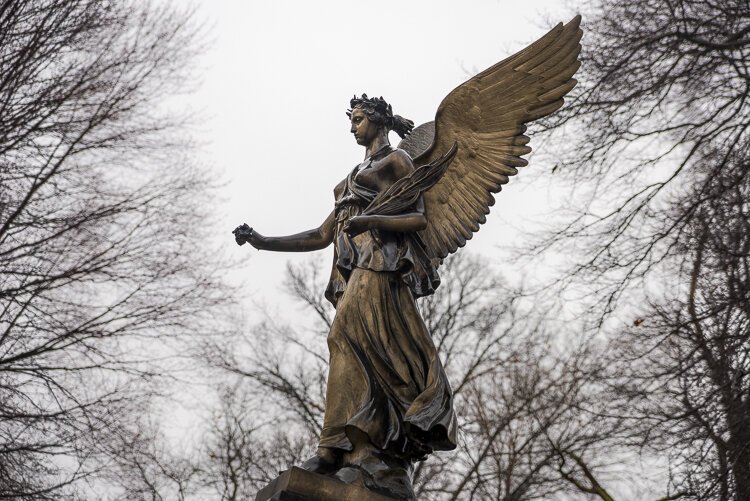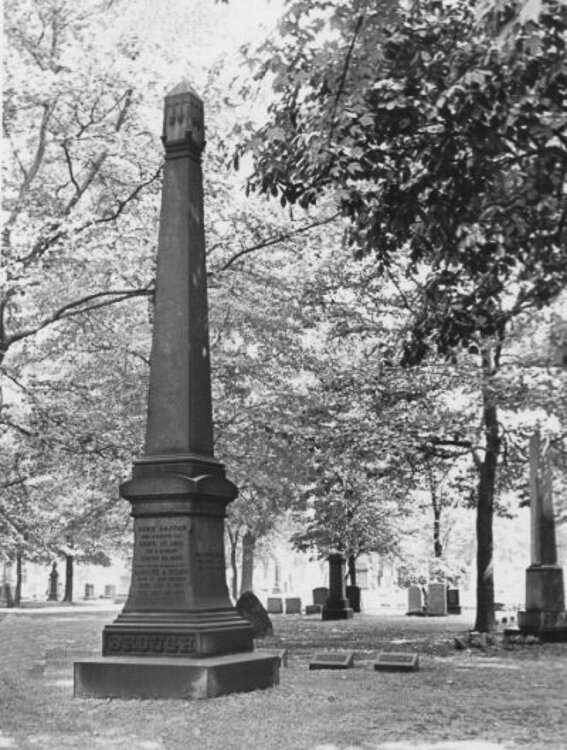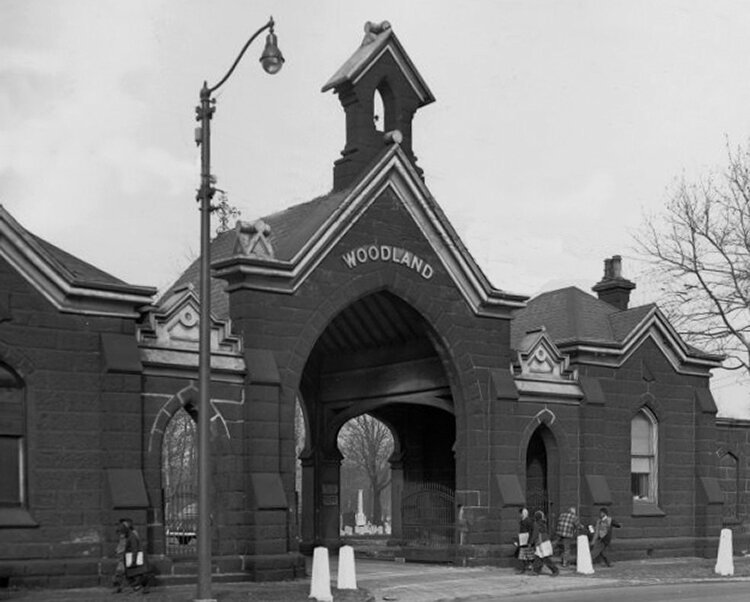The first American cemeteries were austere and prohibited. Consisting of orderly rows of tombstones and generally devoid of landscaping, they were not places where people were inclined to linger.
In the middle of the 19e Century, this landscape began to change with the advent of so-called garden cemeteries –rural landscape cemeteries located outside the urban core of a city. An early example in the United States was Mount Auburn Cemetery in Cambridge, Massachusetts.
Mount Auburn was characterized by winding paths and carriage rides combined with elaborate landscaping. He provided an inviting setting for mourners to reflect and have fun.
 Here in Cleveland, one of the earliest examples is woodland cemetery in today’s Fairfax neighborhood. Established in 1853, it was located on property the city had purchased two years earlier.
Here in Cleveland, one of the earliest examples is woodland cemetery in today’s Fairfax neighborhood. Established in 1853, it was located on property the city had purchased two years earlier.
He was inspired by Cleveland’s growth, both geographically and in terms of population. It was obvious that an old cemetery like that of 1826 Erie Street Cemetery would not be able to meet the city’s needs much longer.
Woodland Cemetery led the way as the first garden cemetery of its type in Cleveland, before the two lake view and Riverside Cemeteries from 15 to 20 years old.
It contains interments that recognize a wide range of Cleveland residents, from political leaders to those involved in nearly every controversy of the 19e Century.
 Carrie CliffordA perfect example is Sara Lucy Bagby Johnsonthe last person prosecuted under the Fugitive Slave Act. The cemetery provides a final resting place for several prominent members of the Underground Railroad and even a famous African-American poet, Carrie WilliamsClifford.
Carrie CliffordA perfect example is Sara Lucy Bagby Johnsonthe last person prosecuted under the Fugitive Slave Act. The cemetery provides a final resting place for several prominent members of the Underground Railroad and even a famous African-American poet, Carrie WilliamsClifford.
Cleveland’s first police chief, John N. Frazee was buried in Woodland in 1917.
While Woodland is home to one of the earliest Civil War monuments in the United States – a 23rd OVI memorial erected in 1865 – it was recently updated with a monument honoring 86 Union veterans. black who are buried there.
The cemetery even holds the remains of a single Confederate Army veteran.
Towards the end of the 19e Century, the cemetery has been embellished with a stone gatehouse, substantial landscaping and elaborate iron fencing, as well as intricate headstones in all styles.
 John Brough, Ohio’s last Civil War governor, was buried in 1865 in Woodland. In addition to military figures, the cemetery holds the remains of major political figures such as John Brough, newspaper publisher and civil war governor of Ohio. Another notable burial is the body of once renowned Cleveland architect J. Milton Dyer, who is remembered as the designer of Cleveland City Hall.
John Brough, Ohio’s last Civil War governor, was buried in 1865 in Woodland. In addition to military figures, the cemetery holds the remains of major political figures such as John Brough, newspaper publisher and civil war governor of Ohio. Another notable burial is the body of once renowned Cleveland architect J. Milton Dyer, who is remembered as the designer of Cleveland City Hall.
With the advent of new garden cemeteries, Woodland’s popularity began to decline. When Lake View Cemetery was established in 1869, 40% of its interments in the first year were Woodland reburials.
The creation of new cemeteries like Highland Park and West Park at the turn of 20e Century further undermined Woodland’s popularity.
Woodland suffered another blow in the early 1930s when a secretary was convicted of embezzling $19,000, a very large sum of money at the time.
Although the funds were recovered, this crime resulted in a lot of deferred maintenance work.
Around the middle of the 20e Century, changing demographics and World War II brought great changes to Woodland Cemetery.
Wartime scrap metal drives have washed away many of the metal decorations the place was once famous for, and neglect and harsh Ohio winters have taken their toll on once-massive stonework.
There was a gap where the cemetery looked abandoned. In the early 1950s there was talk of closing the cemetery and moving all the graves to make way for a municipal housing project. Public opinion firmly rejected it.
Concerned citizens who understood its significance refused to let Woodland go down in history.
A grassroots movement to restore Woodland began around the turn of the 21st century and continues to this day. Recent improvements include rebuilding the original stone gatehouse which had fallen into disrepair.
After considerable effort, the cemetery is once again a place of spectacle – a proud setting for the multitude of Cleveland stories it offers visitors.

